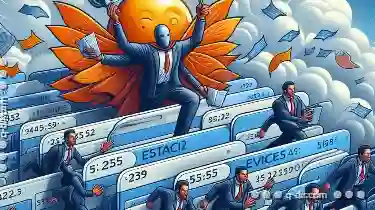This blog post delves into how filters inadvertently contribute to limiting our view by creating digital ignorance among users. We will explore various ...
 aspects such as the types of filters, their impact on content visibility, user behavior, and potential solutions to mitigate these effects. In the vast expanse of digital information, filters play a pivotal role as both enablers and limiters.
aspects such as the types of filters, their impact on content visibility, user behavior, and potential solutions to mitigate these effects. In the vast expanse of digital information, filters play a pivotal role as both enablers and limiters.1. Table of Contents
2. Introduction to Filters in Digital Environments
3. Understanding the Impact: The Limitation of Filter Bubbles
4. Types of Filters: Content vs. Behavioral
5. Technological Solutions for Enhanced Visibility
6. User Empowerment and Education
7. Conclusion
1.) Table of Contents
1. Introduction to Filters in Digital Environments
2. Understanding the Impact: The Limitation of Filter Bubbles
3. Types of Filters: Content vs. Behavioral
4. Technological Solutions for Enhanced Visibility
5. User Empowerment and Education
6. Conclusion
2.) Introduction to Filters in Digital Environments
Filters are algorithms designed to organize, categorize, and often personalize the content we encounter online. They operate on our digital interactions-from search queries to social media feeds-and adapt based on user behavior or predefined parameters. These filters can be broadly categorized into two types: Content Filters and Behavioral Filters.
3.) Understanding the Impact: The Limitation of Filter Bubbles
The concept of a "filter bubble" was introduced by Eli Pariser in his influential book, The Filter Bubble. This term refers to the phenomenon where personalized filters lead users to be consistently exposed to similar content, potentially limiting their exposure to diverse viewpoints and ideas. For instance, if a user tends to like or comment on certain types of news articles, algorithms will adjust the feed to show more of those articles in the future.
This can result in a "cocooning" effect where users are shielded from counter-narratives that might challenge their existing beliefs. This limitation is particularly pronounced with algorithmic feeds, which prioritize engagement and similarity over diversity of information.
4.) Types of Filters: Content vs. Behavioral
Content Filters
Content filters are designed to block or allow specific types of content based on preset criteria. For example, social media platforms might filter out explicit content from minors’ feeds. While this can be crucial for safety and appropriateness, it can also inadvertently limit exposure to new experiences and perspectives.
Behavioral Filters
Behavioral filters track user interactions (e.g., clicks, likes, comments) and adjust the feed accordingly. This personalization is supposed to make browsing more efficient but can lead to a narrowing of perspective over time. Users may never see alternative viewpoints or new sources because they are already deeply engaged with content that aligns with their existing interests.
5.) Technological Solutions for Enhanced Visibility
To counteract the negative effects, several technological solutions have been proposed:
- Transparency Tools: These tools aim to inform users about what data is being collected and how it’s being used. This includes setting clear privacy policies that explain filter algorithms and their implications.
- Selective Filtering Options: Platforms can provide settings for users to manually adjust the type of content they see, allowing more exposure to diverse viewpoints without completely disabling filters.
6.) User Empowerment and Education
Educating users about how filters work is crucial. Users should be aware that their experience is being tailored based on complex algorithms and that this could potentially limit their access to different perspectives. This can empower them to make more informed choices about their digital consumption habits.
7.) Conclusion
Filters are indispensable tools for managing information overload, but they also have significant implications for what we see and don’t see online. Understanding the impact of filters on limiting views-especially when it comes to exposing users to diverse perspectives-is crucial. By empowering users with knowledge and providing them with control over their digital experiences, we can mitigate some of these negative effects and promote a more inclusive and informed internet environment.
In conclusion, while filters undoubtedly simplify our online experience by making recommendations based on past behavior, they also contribute to the phenomenon known as "digital ignorance." By acknowledging this limitation and implementing strategies to counteract it, we can ensure that digital platforms continue to serve as sources of education and enlightenment rather than limitations in knowledge expansion.

The Autor: / 0 2025-05-06
Read also!
Page-

The Myth of "Efficient" Multitasking: Tab's Fallacy.
We strive to accomplish more in less time, and this mindset has deeply influenced how we interact with technology, particularly our devices and ...read more

Why Tree View Search Remains a Cruel Joke.
Among these, tree views are ubiquitous, yet their search capabilities often leave much to be desired. This blog post explores why traditional tree ...read more

Filters' Future: Hyper-Personalization or Transparent Control?
So too do the ways we interact with it. In particular, the realm of digital filters has seen significant advancements that not only enhance visual ...read more